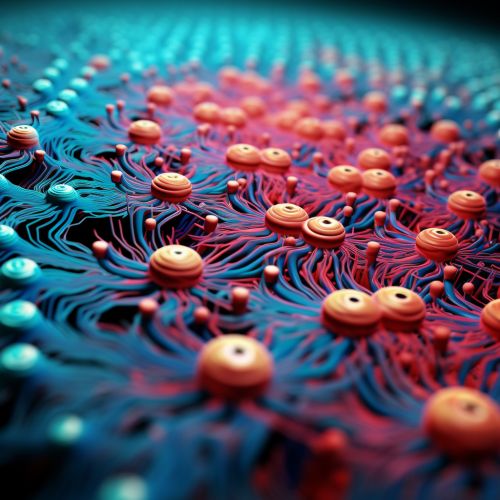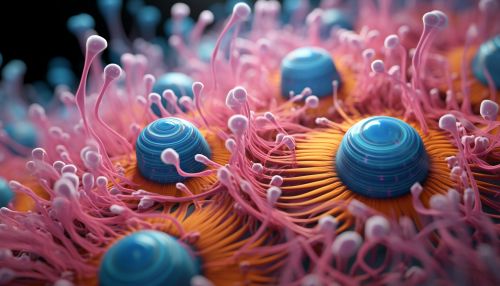Magnetosomes
Introduction
Magnetosomes are intracellular structures found in Magnetotactic bacteria, which are a diverse group of prokaryotes that orient and navigate along magnetic field lines. This unique biological phenomenon is known as Magnetotaxis. Magnetosomes are composed of magnetic mineral crystals enveloped by a lipid bilayer membrane. The magnetic mineral is typically either magnetite (Fe3O4) or greigite (Fe3S4).


Structure and Composition
Magnetosomes are typically 35-120 nm in size and are arranged in chains within the bacterial cell. This arrangement allows the magnetosomes to behave as a single magnetic dipole, which aids in the magnetotaxis of the bacteria. The magnetosome membrane is derived from the bacterial cell membrane and is composed of a unique set of proteins, many of which are involved in the biomineralization process.
Biomineralization
The process of Biomineralization in magnetotactic bacteria is a highly controlled process that results in the formation of magnetite or greigite crystals within the magnetosome. This process is regulated by a group of genes known as the magnetosome gene island (MAI). The MAI includes genes for magnetosome membrane proteins, iron transport proteins, and proteins involved in the biomineralization process.
Magnetotaxis
Magnetotaxis refers to the ability of magnetotactic bacteria to orient and navigate along magnetic field lines. This is achieved through the chain arrangement of magnetosomes within the bacterial cell, which allows the bacteria to behave as a single magnetic dipole. Magnetotaxis is thought to aid in the bacteria's search for optimal conditions in their aquatic habitats, which are typically low in oxygen and high in sulfide.
Applications
Magnetosomes have potential applications in various fields including biotechnology, medicine, and environmental remediation. In biotechnology, magnetosomes can be used as a natural source of magnetic nanoparticles for the fabrication of magnetic devices. In medicine, magnetosomes can be used for targeted drug delivery, magnetic hyperthermia treatment for cancer, and as contrast agents in magnetic resonance imaging (MRI). In environmental remediation, magnetotactic bacteria can be used to remove heavy metals from contaminated water.
